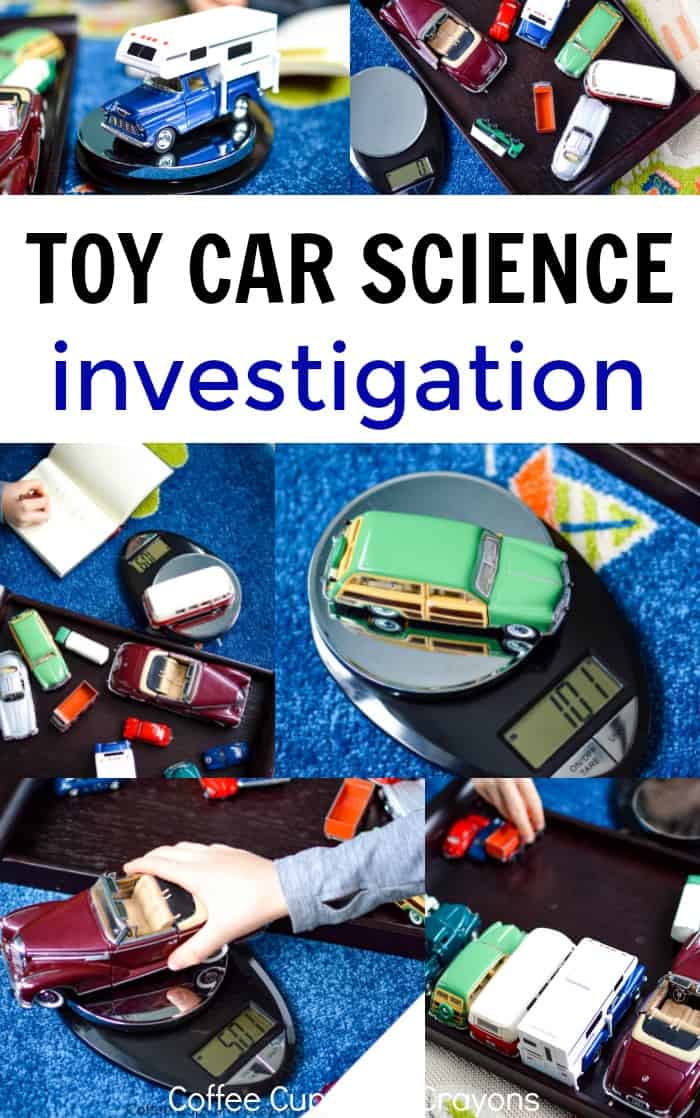Do you have a toy car fanatic?
A little one who loves to collect rocks and pine cones?
A child who loves to pretend to cook with play food?
It doesn’t matter what your kids favorite toy is, whatever they like to carry around and play with can be used for scientific learning!
This toy car science activity uses the toys cars, or other toys, you have at home to work on critical thinking and reasoning while having fun.

Kids activities don’t have to be complicated to be fun. Gather some of your child’s favorite toys and use them in a engaging, hands on science investigation.
Weighing Toy Car Science Activity

Supplies needed to set up the investigation:
- Scale, a basic kitchen scale will work perfectly, if you don’t have one on hand a post office style home scale or a sensitive baby scale would also likely work
- Toys in different sizes, we went with different shaped and sized cars but you could choose anything your kiddos are into that provides variety in weights
- Notebook to write everything down in to record your findings

How to experiment with toy cars:
- Help your child start by gathering 5 to 10 toy cars (or small object of choice) and your scale.
- Ask him to make a hypothesis about which will be the lightest or heaviest.
- Record the hypothesis in your notebook if desired.
- Weigh each of the cars using the scale. You can record the weight of each car in the notebook or have the child write and draw each car.
- Order the cars in a line from lightest to heaviest.
- Check your predictions to see how close you were to the final answers.

Learning with Toy Cars
Any time kids are investigation anything either formally like this with a notebook and scale or informally while they are playing they are building important critical thinking skills. A great way to encourage them to use these skills is by comparing the results with their predictions and discussing why they were correct or not. Many times the wrong “guess” yields the most learning!

You can extend the learning for preschool and kindergarten age kids by having them re-organize the cars by properties other than weight once you are done. They can group them based on size, color, type, etc. They can record the results of each new “experiment” in their notebook as well. Newer writers can make tally marks next to colors, etc you have written in for them.
Older kids can take the measurements one step further and add the weights of all of the vehicles. Use subtraction to compare the difference between the lightest and heaviest vehicle. And even come up with their own math problems to solve using their data. You even can show them how to record their data in a graph or extend the learning by having them repeat this investigation using length instead of weight.

Don’t let the fun and discovery stop there!
We have TONS of science experiments your kids will love on our Super Cool Science Experiments for Kids page!

Leave a Reply